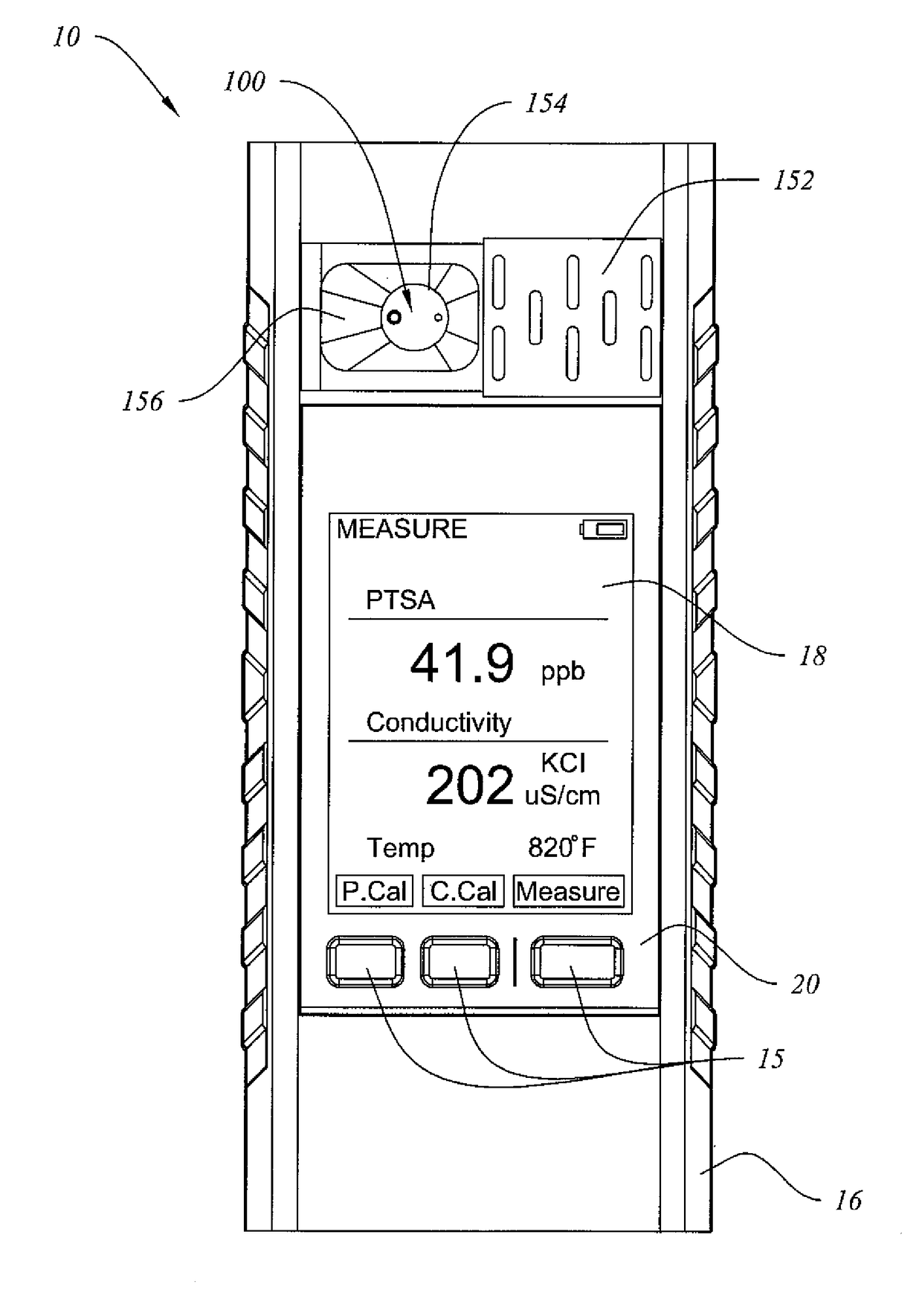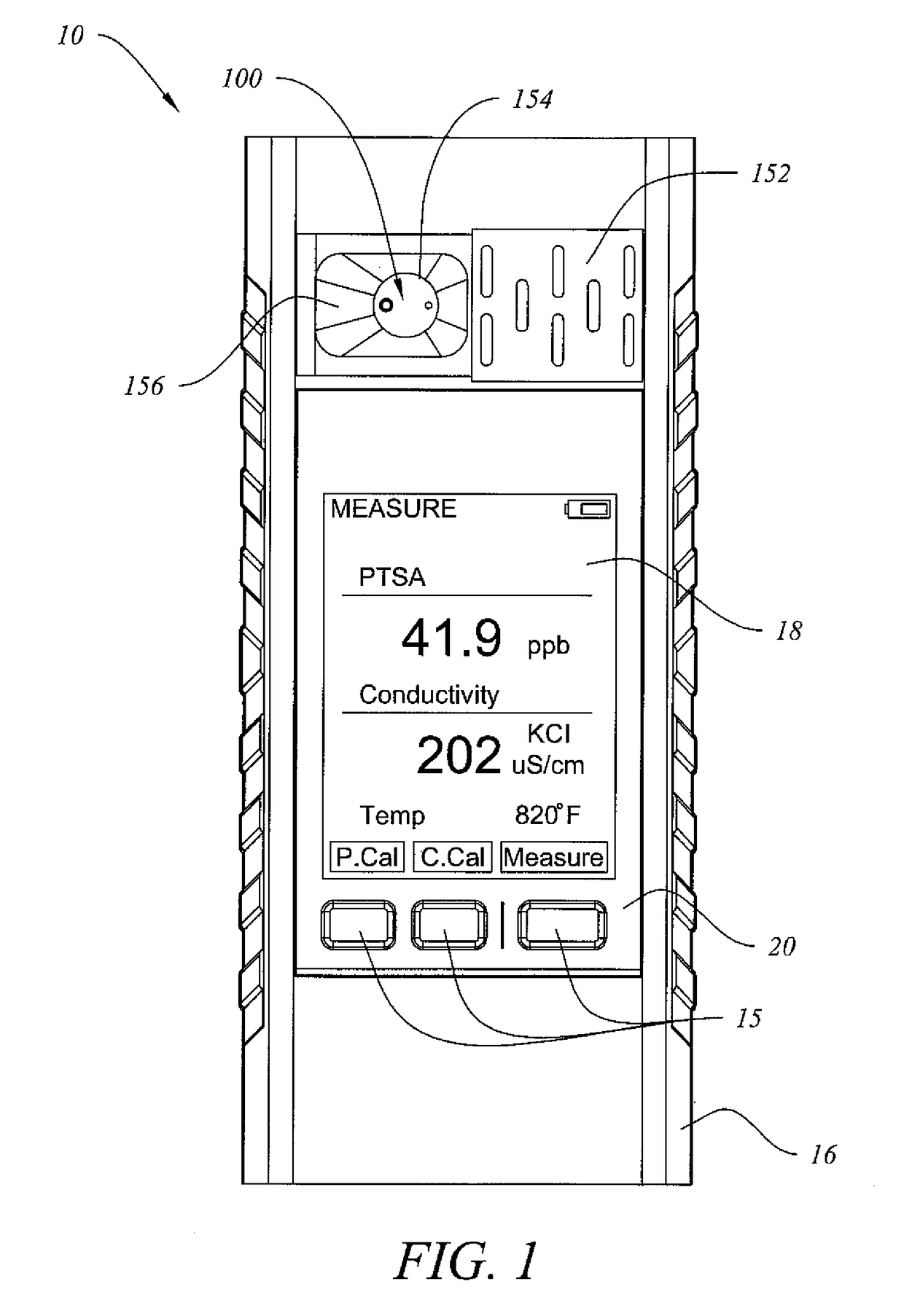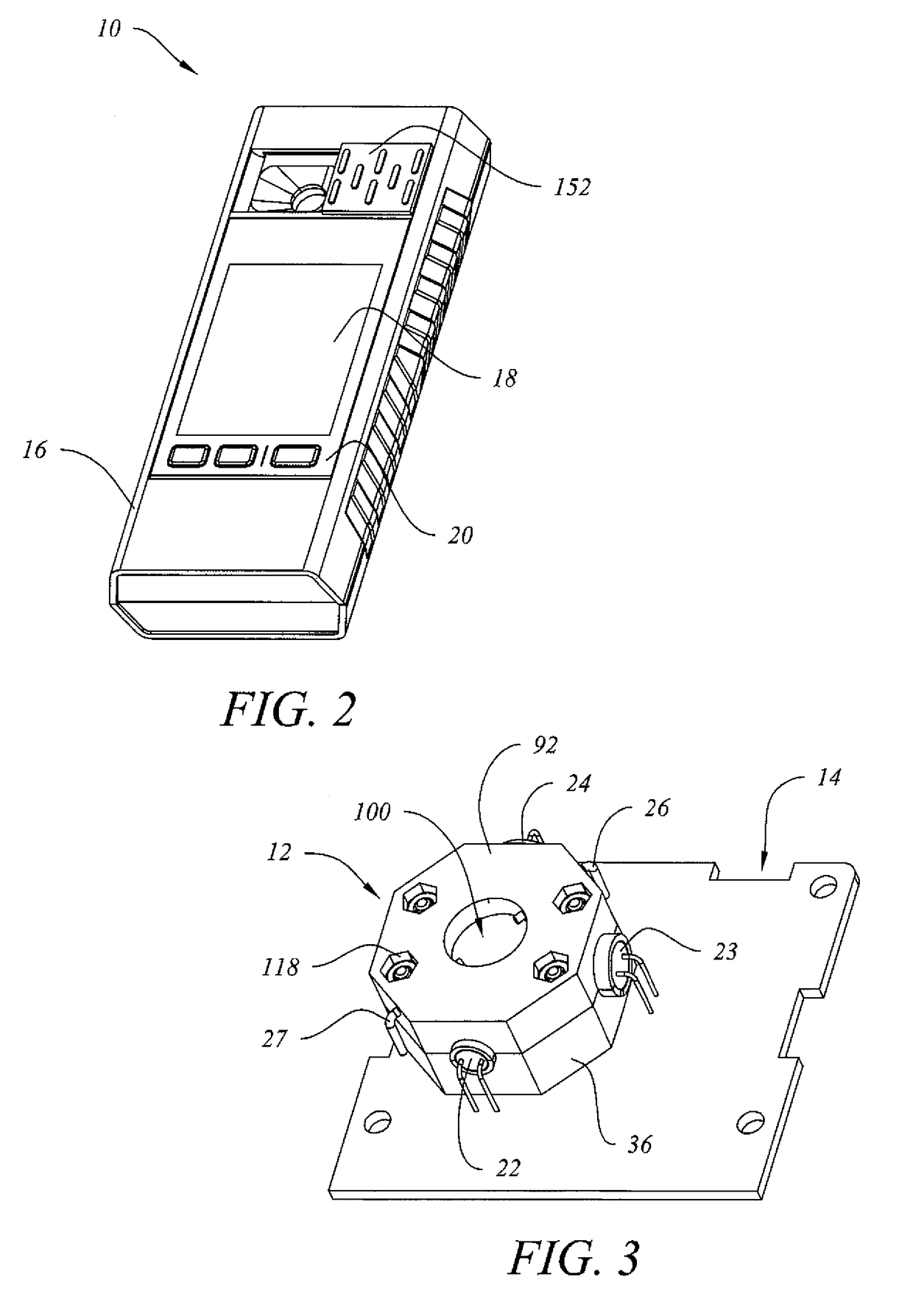Opto-electrochemical sensing system for monitoring and controlling industrial fluids
a sensing system and optoelectrochemical technology, applied in the direction of material electrochemical variables, instruments, fluorescence/phosphorescence, etc., can solve the problems of insufficient monitoring of most industrial process fluids, inaccurate measurements, and lack of sensitivity of configuration, so as to achieve rapid and accurate measurement of opto-electrochemical properties
- Summary
- Abstract
- Description
- Claims
- Application Information
AI Technical Summary
Benefits of technology
Problems solved by technology
Method used
Image
Examples
Embodiment Construction
[0027]FIGS. 1-9 depict an electrochemical-optical sensing system 10 according to a preferred embodiment of the invention. Electrochemical-optical sensing system 10 preferably comprises electro-optical housing 12, printed circuit board 14, external housing 16, display 18, control panel 20, a sample receptacle for containing a sample of water or other fluid to be analyzed and formed at least in part by sample cell 80 and portions of electro-optical housing 12, at least one light source 22 (and most preferably two light sources 22, 23), at least one optical detector or sensor 24 (and most preferably two optical detectors or sensors 24, 25), and at least two electrodes 26, 27 that allow optical measurements and electrochemical measurements of the sample. The specific model shown in FIGS. 1-9 is designed to measure conductivity and fluorescence of aqueous process fluid samples obtained from a fluid system, such as a cooling tower or a boiler system. Conductivity is a common way to measur...
PUM
| Property | Measurement | Unit |
|---|---|---|
| internal volume | aaaaa | aaaaa |
| wavelength range | aaaaa | aaaaa |
| wavelength range | aaaaa | aaaaa |
Abstract
Description
Claims
Application Information
 Login to View More
Login to View More - R&D
- Intellectual Property
- Life Sciences
- Materials
- Tech Scout
- Unparalleled Data Quality
- Higher Quality Content
- 60% Fewer Hallucinations
Browse by: Latest US Patents, China's latest patents, Technical Efficacy Thesaurus, Application Domain, Technology Topic, Popular Technical Reports.
© 2025 PatSnap. All rights reserved.Legal|Privacy policy|Modern Slavery Act Transparency Statement|Sitemap|About US| Contact US: help@patsnap.com



